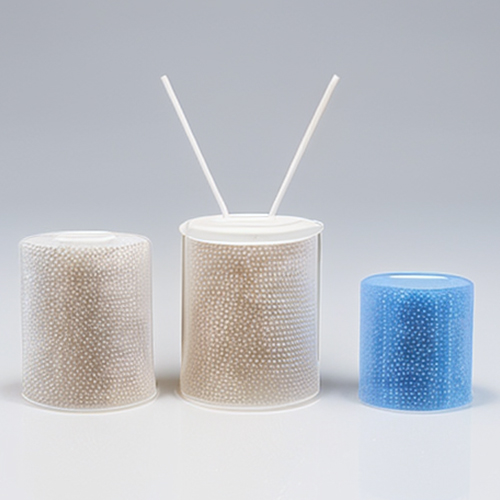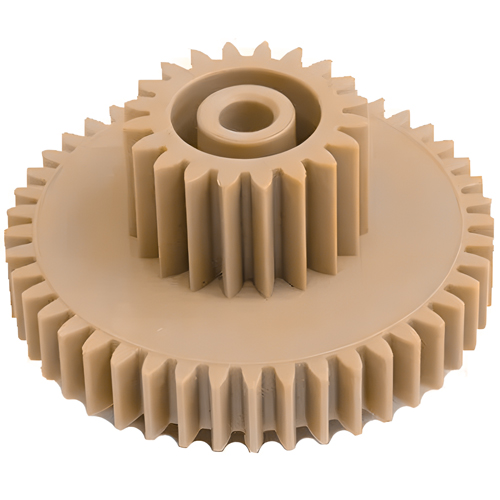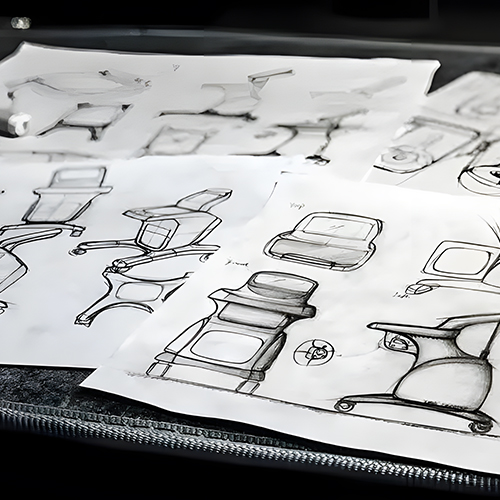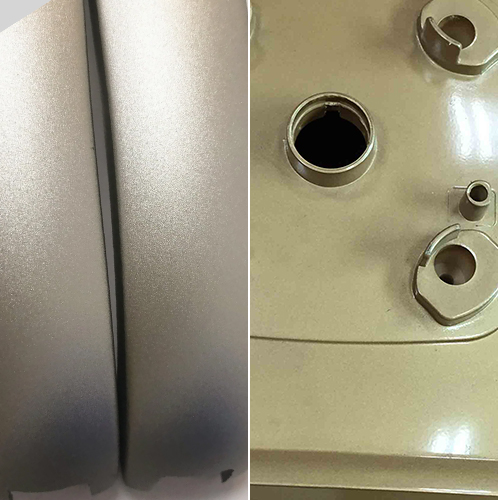The manufacturing industry highly values the role of semi-finishing. This crucial process involves refining a product to a specific level of completion before reaching the final finishing stage.
It is pivotal in ensuring the end product meets the required specifications and standards, enhancing quality and aesthetics. Various industries, from Kfz-Teile zu Luft- und Raumfahrtkomponenten and medical devices, widely use semi-finishing.
In this article, we will take a look at the intricacies of semi-finishing, its methods, and its pivotal role in delivering top-notch manufacturing outcomes. Join us in uncovering the essential aspects of this intermediate machining stage and its importance in the production process.
Understanding the Mechanics of Semi-Finishing in Intermediate Machining
When exploring the intricacies of semi-finishing, a precise and controlled approach is essential. The following process provides a detailed insight into how semi-precision machining operates, ensuring that intermediate-level readers can comprehend its nuances.
Tool Selection and Parameters
In semi-finishing, a ¾-inch finishing ball end mill takes center stage. The operation follows a “Z” level semi-finish pass at 6,000 rpm with a feed rate of .024 inches per revolution (IPR), which equates to 144 inches per minute (ipm).
This is accomplished with a step-down of .03 inches. The result is a semi-finished cavity within .015 inches of the final dimensions. This approach removes residual material remnants from the prior high-feed roughing mill.
Comprehensive Coverage
The semi-finishing process encompasses the entire cavity, extending its influence to include corner radii within .015 inches of the target dimensions. This uniformity ensures that consistent stock material remains in place, setting the stage for the finishing phase.
It’s important to note that using a finishing tool smaller than the part’s final geometry corners is advisable. This prevents any potential dwell of the tool within these intricate areas.
Collaboration with Stakeholders
An additional facet of semi-finishing pertains to communication with customers and design engineers. This dialogue is pivotal in elucidating the significance of larger radii within the part’s design and machining process. In the presented scenario, the minimum corner radius is .5 inches, necessitating the utilization of a finishing tool featuring a 3/8-inch radius.
The Role of Semi-Finishing in Manufacturing
Semi-finishing, also known as intermediate or midway machining, plays a crucial role in the manufacturing process in factories. These semi-precision machining processes offer a range of benefits, making them indispensable in the journey from raw materials to finished products.
Let’s explore how semi-finishing and intermediate machining contribute to cost-effective and efficient manufacturing processes.
- Cost Efficiency: Semi-finishing, or preliminary machining, significantly reduces manufacturing costs. By partially processing materials, manufacturers save time and resources, making the production process more budget-friendly. This not only improves the bottom line but also ensures cost-efficient progress machining.
- Enhanced Efficiency: Integrating semi-finished goods enhances efficiency, especially in mid-stage machining. Manufacturers can focus on refining and completing products rather than starting from scratch, speeding up the production cycle.
- Improved Quality: Craftsmen create semi-finished products under controlled conditions to ensure a high level of quality control during secondary machining or sub-finishing. This intermediate machining stage allows for faster progress and better quality assurance.
- Reduced Inventory Costs: One of the significant advantages of in-between machining is the reduction in inventory costs. These materials are often produced in smaller batches, minimizing the need for extensive storage space. This approach aligns with just-in-time manufacturing, reducing associated expenses while accommodating changes in demand.
- Greater Flexibility: Semi-finishing and mid-level machining introduce greater flexibility into the manufacturing process. Manufacturers can adapt these materials for various end products, allowing for a swift response to shifts in market dynamics and customer preferences. This capability to transition during machining is a valuable asset in today’s fast-paced business environment.
Ultimately, semi-finishing, intermediate machining, or halfway machining is an essential component of modern manufacturing. It enables companies to reduce costs, improve efficiency, enhance quality, and adapt to changing market conditions. Manufacturers embracing these processes gain a competitive edge and better meet the demands of the ever-evolving industry.
Finishing vs. Semi-Finishing in Machining: How Are They Different?
In manufacturing, achieving the desired precision, surface quality, and functional characteristics of a machined part is a critical aspect of the production process. Two key stages in this process are “semi-finishing” and “Veredelung.” Let’s delve into the details of these stages and understand the crucial differences between them.
1. Semi-Finishing
As mentioned earlier, semi-finishing is an intermediate stage in the machining process that occurs after roughing but before the final finishing phase. It aims to remove excess material from the roughing process and prepare the workpiece for final finishing.
Key Characteristics
- Material Removal: During semi-finishing, the process still involves removing material from the workpiece, though at a slower rate compared to roughing. This stage helps in achieving the desired shape and dimensions.
- Tooling: Semi-finishing typically involves cutting tools or abrasives with a medium level of precision. These tools are selected based on the desired surface quality and dimensional accuracy.
- Oberfläche: The primary goal of semi-finishing is to improve the surface quality of the part. However, it does not achieve the final desired surface finish but leaves it at a pre-defined level.
- Tolerances: During semi-finishing, the process brings Toleranzen closer to the final required values, yet it leaves some allowances for the final finishing process to achieve the exact specifications.
- Cutting Parameters: Cutting speed, feed rate, and depth of cut are adjusted to semi-finish the workpiece effectively while avoiding excessive tool wear.
- Removal Rate: The material removal rate is lower than roughing but higher than the finishing stage. It strikes a balance between speed and precision.
2. Finishing
Finishing is the final phase of machining and aims to achieve the ultimate precision, surface quality, and dimensional accuracy required for the part.
Key Characteristics
- Material Removal: In the finishing phase, only a minimal amount of material is removed, typically in the form of a fine layer of the workpiece’s surface. The focus here is on refining the part rather than shaping it.
- Tooling: Precision cutting tools or abrasives with the finest grit are used during finishing. These tools are designed to create the desired surface texture and meet strict dimensional tolerances.
- Oberfläche: The primary objective of finishing is to attain the specified surface finish, often in micrometers or nanometers. It results in a highly polished or smooth surface.
- Tolerances: Dimensional tolerances are brought to their final, exact values during the finishing stage. This is where the part meets its design specifications precisely.
- Cutting Parameters: Cutting parameters are meticulously controlled to ensure that material removal is minimal and does not adversely affect the part’s precision.
- Removal Rate: The material removal rate in the finishing phase is the lowest among all machining stages, as the emphasis is on precision and surface quality.
A Brief Comparison
| Aspect | Semi-Finishing | Fertigstellung |
| Purpose | Prepare the workpiece for final finishing, achieve approximate dimensions, and shape the part. | Achieve the highest precision, exact dimensions, and an exceptional surface finish. |
| Material Removal | Significant material removal to attain desired dimensions. | Minimal material removal to refine the surface. |
| Tooling | Tools with medium precision are used. | Tools with the highest precision are employed. |
| Oberfläche | Improves surface quality but doesn’t achieve the final desired finish. | Ensures the desired surface texture and gloss are attained. |
| Tolerances | Brings tolerances closer to the final values. | Achieves the exact specifications. |
| Cutting Parameters | Cutting parameters are adjusted for effective material removal. | Cutting parameters are meticulously controlled to minimize material removal. |
| Material Removal Rate | Material removal rate is moderate. | Material removal rate is minimal. |
The Utilization of Semi-Finished Products in Manufacturing
Within intermediate machining, semi-finishing or using semi-finished goods forms a critical component. These semi-precision materials, often called midway machining products, are pivotal building blocks in the manufacturing process.
They are integral to accelerating production, thereby reducing time to market and finding applications across various industries.
Semi-finished goods encompass partially finished products integrated into the final goods, ultimately reaching consumers or businesses. Their importance in most manufacturing processes is undeniable, with many production cycles heavily reliant on assembling a collection of these semi-finished materials.
The usage of semi-finished products can manifest in several ways:
Procurement from Suppliers
Manufacturers often acquire semi-finished goods from specialized suppliers. These components, already in a production-ready state, enable companies to expedite their manufacturing processes and meet market demands more efficiently.
This approach aligns with the concept of in-between machining, where materials are progressively shaped into their final form.
Internal Production
In certain scenarios, manufacturers take a more integrated approach by producing semi-finished goods. An excellent example is a chocolate maker that owns the cocoa bean processing facility responsible for crafting the key ingredients for their chocolate bars.
In this instance, the manufacturer retains control over the quality and customization of the semi-finished components, a practice akin to transition machining.
Sale to Other Companies
Beyond internal usage, some manufacturers specialize in crafting semi-finished goods designed for sale to other businesses. These semi-precision materials are then incorporated into various final products by different companies, fostering collaborative industrial ecosystems.
It reflects the concept of mid-level machining, wherein specialized semi-finished goods become integral components in diverse manufacturing operations. These versatile applications of semi-finished goods are pivotal in expediting production, enhancing quality, and streamlining the manufacturing process.
Summing Up!
Semi-finishing is a pivotal process in machining and is essential for optimizing product quality. To make the most of it, consider tool selection, techniques, and product requirements. For expert CNC machining und Spritzgießdienstleistungen, Prototool is your trusted partner in the journey toward superior products.










